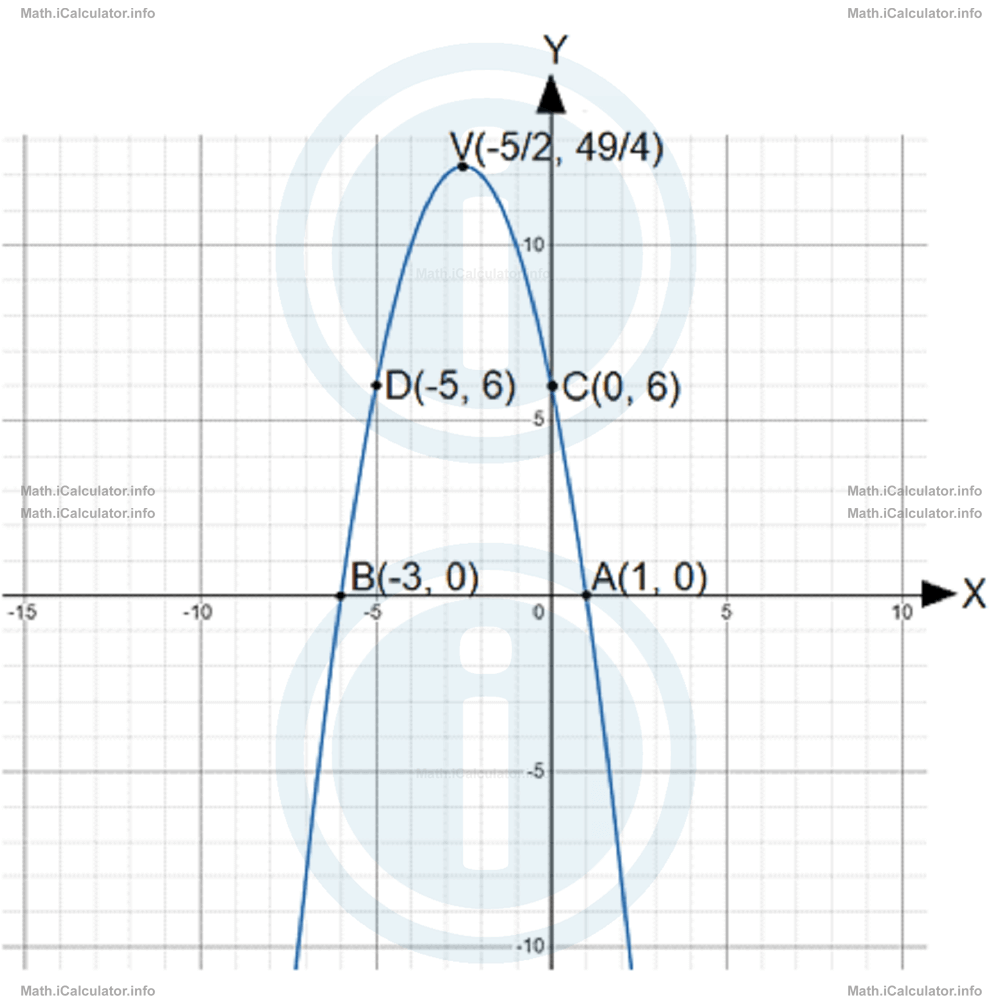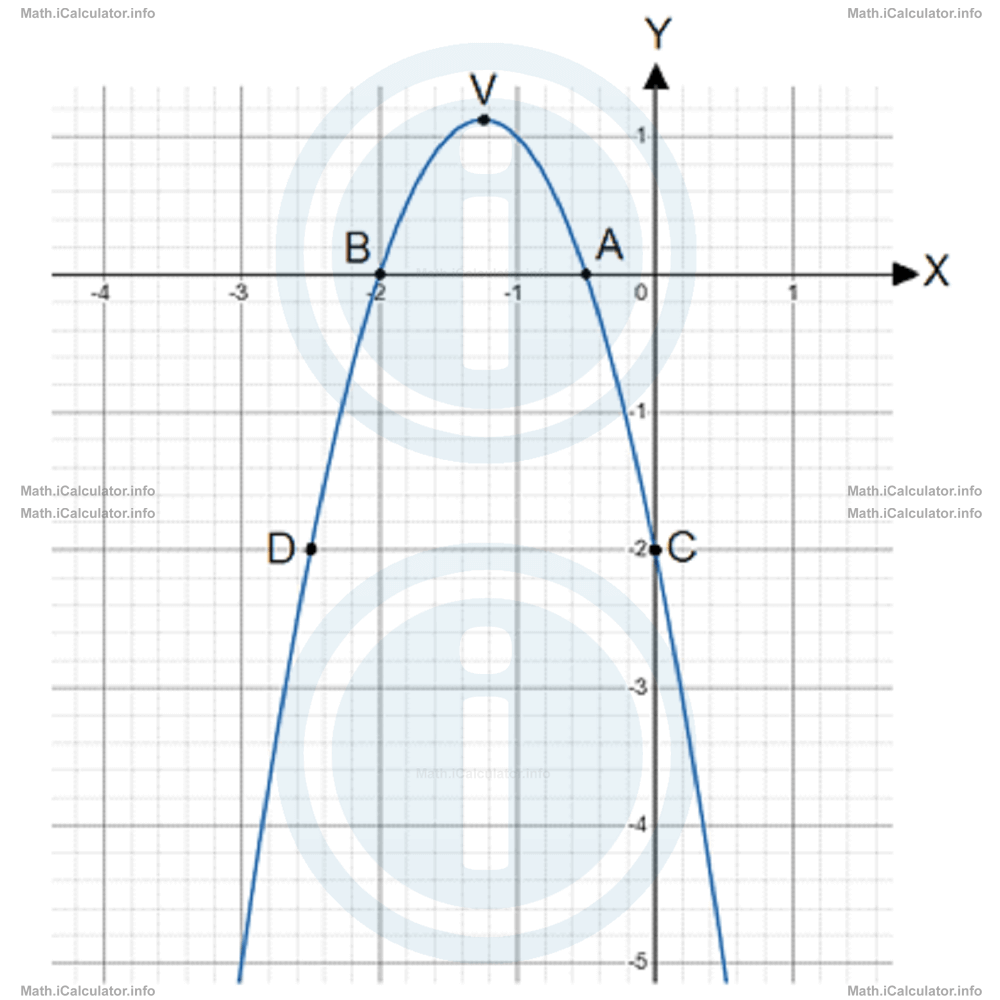Menu
Math Lesson 15.1.5 - What does the Sign of the Coefficient "a" Indicate for the Parabola?
Please provide a rating, it takes seconds and helps us to keep this resource free for all to use
Welcome to our Math lesson on What does the Sign of the Coefficient "a" Indicate for the Parabola?, this is the fifth lesson of our suite of math lessons covering the topic of Quadratic Graphs Part One, you can find links to the other lessons within this tutorial and access additional Math learning resources below this lesson.
What does the Sign of the Coefficient "a" Indicate for the Parabola?
The sign of the coefficient 'a' is very important in understanding the direction of a parabola formed by a quadratic equation. Thus, if this coefficient is positive, the parabola has the arms up, as occurred in all examples we have discussed so far. In such cases, the parabola has a minimum, which corresponds to the vertex V. On the other hand, when the coefficient 'a' is negative, the arms of the parabola are directed downwards and the parabola has a maximum at the vertex point V. The solution is the same as in the previous cases.
Let's consider an example where the coefficient a is negative to clarify this point. For example, let's consider the quadratic equation
where a = -1, b = -5 and c = 6. The discriminant Δ therefore is
= (-5)2 - 4 ∙ (-1) ∙ 6
= 25 + 24
= 49
Thus, the roots of the quadratic equation -x2 -5x + 6 = 0, which correspond to the x-intercepts of the corresponding parabola are
= -(-5) - √49/2 ∙ (-1)
= 5 - 7/-2
= -2/-2
= 1
and
= -(-5) + √49/2 ∙ (-1)
= 5 + 7/-2
= 6/-2
= -3
The two x-intercepts therefore are: A(1, 0) and B(-3, 0).
Now, let's deal with the vertex point V. we have
= - (-5)/2 ∙ (-1)
= -5/2
and
= -49/4 ∙ (-1)
= 49/4
Thus, the vertex V is at V(-5, 4, 9/4).
Now, let's find the y-intercept C of the graph. Thus, for x = 0, we have
= -25 + 25 + 6
= 6
Therefore, the y-intercept is at C(0, 6).
The symmetrical point to C (which we call D) is at xD = -5, because from the half segment formula
we obtain
Thus,
The y-coordinate of point D therefore is
= -25 + 25 + 6
= 6
Hence, the point D is at (-5, 6).
Inserting all these five points: A(1, 0), B(-3, 0), in the same coordinates system and connecting them smoothly yields a parabola. With the five points found above the graph actually lies from zero and above, but if we continue drawing the line below zero in the same way, we obtain the following graph:

Example 4
Plot the graph of the following quadratic equation.
Solution 4
We have a = -2, b = -5 and c = -2. The discriminant Δ is
= (-5)2 - 4 ∙ (-2) ∙ (-2)
= 25 - 16
= 9
Since the discriminant is positive, the equation has two roots. This means the corresponding parabola has two x-intercepts A and B, where:
= -(-5) - √9/2 ∙ (-2)
= 5 - 3/-4
= 2/-4
= -1/2
and
= -(-5) + √9/2 ∙ (-2)
= 5 + 3/-4
= 8/-4
= -2
Therefore, the two x-intercepts have the coordinates A(-1/2, 0) and B(-2, 0).
Again, the vertex V has the coordinates
= -(-5)/2 ∙ (-2)
= -5/4
and
= -9/4 ∙ (-2)
= 9/8
Hence, the vertex is at V(-5/4, 9/8).
The y-intercept C is at xC = 0 and yC = c = -2. Hence, this point has the coordinates C(0, -2).
Last, let's find the symmetrical point of C, i.e. of point D. We know from the midpoint formula that
Substituting the known values, yields
Thus,
Therefore, since the y-coordinate of point D is the same as that of point C, we have D(-5/2, -2).
Now, let's plot the graph based on the above five points: A(-1/2, 0), B(-2, 0), C(0, -2), D(-5/2, -2) and V(-5/4, 9// 8/).

You have reached the end of Math lesson 15.1.5 What does the Sign of the Coefficient "a" Indicate for the Parabola?. There are 6 lessons in this physics tutorial covering Quadratic Graphs Part One, you can access all the lessons from this tutorial below.
More Quadratic Graphs Part One Lessons and Learning Resources
Whats next?
Enjoy the "What does the Sign of the Coefficient "a" Indicate for the Parabola?" math lesson? People who liked the "Quadratic Graphs Part One lesson found the following resources useful:
- Parabola Coefficient Feedback. Helps other - Leave a rating for this parabola coefficient (see below)
- Types of Graphs Math tutorial: Quadratic Graphs Part One. Read the Quadratic Graphs Part One math tutorial and build your math knowledge of Types of Graphs
- Types of Graphs Revision Notes: Quadratic Graphs Part One. Print the notes so you can revise the key points covered in the math tutorial for Quadratic Graphs Part One
- Types of Graphs Practice Questions: Quadratic Graphs Part One. Test and improve your knowledge of Quadratic Graphs Part One with example questins and answers
- Check your calculations for Types of Graphs questions with our excellent Types of Graphs calculators which contain full equations and calculations clearly displayed line by line. See the Types of Graphs Calculators by iCalculator™ below.
- Continuing learning types of graphs - read our next math tutorial: Quadratic Graphs Part Two
Help others Learning Math just like you
Please provide a rating, it takes seconds and helps us to keep this resource free for all to use
We hope you found this Math tutorial "Quadratic Graphs Part One" useful. If you did it would be great if you could spare the time to rate this math tutorial (simply click on the number of stars that match your assessment of this math learning aide) and/or share on social media, this helps us identify popular tutorials and calculators and expand our free learning resources to support our users around the world have free access to expand their knowledge of math and other disciplines.